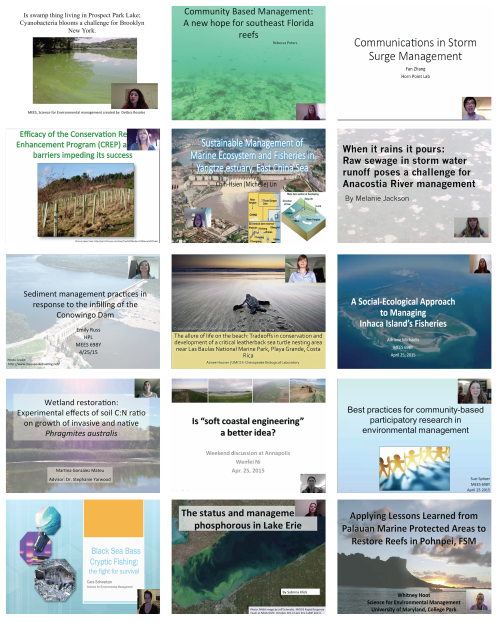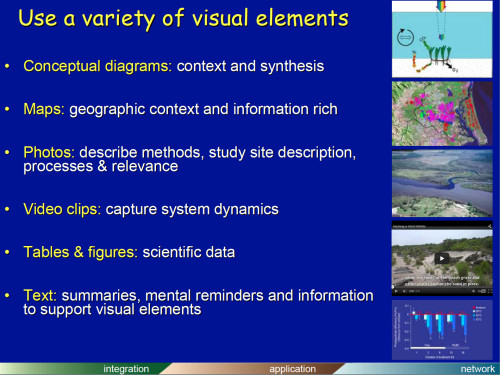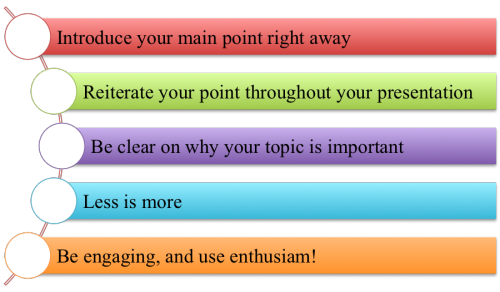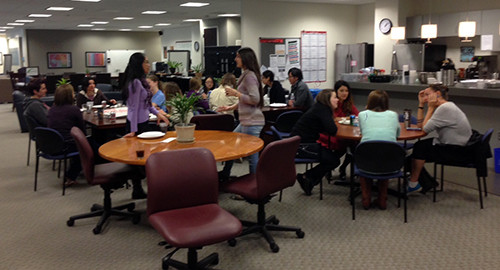Fifteen students, Ten minutes: One humbling education
Rebecca Peters, Aimee Hoover, Emily Russ ·Rebecca Peters, Aimee Hoover, Emily Russ
The birds are chirping, the grass is green, the tourists are out walking the streets, and students are indoors on a Saturday signaling the coming end of another eventful school year: Spring is in the air in Annapolis. On Saturday April 25, 2015 graduate students in the Science for Environmental Management Class offered by the University of Maryland came together to put into practice the communication techniques we learned these past few months. Throughout this academic semester, the focal point was the role of science in environmental management and the effective communication of science to various groups. A flipped classroom approach was used in this class, so the students could discuss in an open forum the science’s role in a variety of environmental issues facing today’s society and how to successfully use science to make management decisions. Effectively communicating science to implement informed management actions can be challenging, and during class, students learned techniques and practices to let their science be heard. Communication of science is one of the most important skills a scientist needs to learn in order to be successful. However, this is a skill many fail to fully develop. We were privileged to have professionals guide us clearly through the process, informing us on essential communication and presentations skills during these past few months. The simple act of communication, one of the vital traits connecting humans to one another, is not as natural as it may seem. This has become blatantly clear throughout this course. During childhood, students usually have favorite teachers, those able to inspire and communicate difficult ideas in understandable ways. This is what scientists should strive for: effectively teaching and communicating science to whichever audience is present.

In order to practice this newly acquired skill and knowledge, we presented on a variety of environmental problems and the management actions used to mitigate these problems. Each of us chose our presentation topic, which provided everyone the opportunity to learn about a diverse array of environmental issues. Some examples of the topics covered were: algal blooms, endangered species, wetland restoration, Conowingo Dam sedimentation issues, fisheries management, and citizen science. The topics were issues each student has personally worked on, past or present, giving insight into the interests and experiences of the students, making it personally relevant and engaging.
To demonstrate what we learned, we prerecorded presentations on Camtasia, a useful tool in developing recorded videos. The ten minutes we were allowed passed quickly as we had to introduce our topic, explain the problem, and provide management solutions. That’s a mouthful for these complex issues, and brevity is not a trait most scientists possess. In order to keep the presentations in the allotted time, the students worked hard to put together a concise, yet informative presentation. Prerecording the presentations offered a unique opportunity to allow us to watch ourselves present, which is something out of the ordinary as scientists. At first watching ourselves was awkward, but this gave us the chance to better ourselves as speakers. Along with learning presentation tips, we also got the opportunity to critique the PowerPoint presentations we put together. The feedback given on our presentation style and PowerPoint slides allowed each of us to grow as a scientific communicator.

PowerPoint was our communication aid for this class. As the name implies, it can be a powerful tool to make the point, but when used poorly, it can be weak and draining on the audience. Before putting these presentations together we were given tips on what makes a good PowerPoint. One piece of advice is to understand the audience to whom you are speaking. Depending on whether you are presenting to a group of scientists or presenting to the public, your PowerPoint may, and should, change. No matter the audience, less is more. Having a slide that is too wordy will leave your audience bored or distracted by reading instead of listening to what is said. Keep the audience interested visually with clean graphics as much as possible. If graphics from the paper or article you are drawing from are too complex, do not be shy to recreate your own. Also, appropriate humor can be incorporated into your PowerPoint, as making people laugh is one means of grabbing their attention. Finally, make sure your key points are shown, and shown repeatedly, throughout your slides so your audience will grasp the overall message as they walk out. All of these tips were successfully incorporated into each student’s presentation, and throughout the day, we were able to see the hard work each other put into their research.
After each presentation was viewed, feedback was given by Dr. Don Boesch and Dr. Bill Dennison to highlight the ways each presentation was effective or ways it could be improved. The feedback helped provide insight into what makes a presentation successful in communicating topics in a given time constraint. One major piece of advice from Dr. Dennison is, “Tell them what you’re going to tell them, tell them, then tell them what you told them.” This means to introduce your topic early on; then, reiterate it throughout your presentation so your point will get across. Focusing on two or three important points that you want your audience to gain from your presentation will help guide you throughout your presentation, and make Dr. Dennison’s advice easier to accomplish. When doing this make sure you are clear when describing your topic and include why this topic is important. If possible, including any personal context to your presentation connecting your audience with your topic. Lastly, a very important piece of advice to giving a successful presentation is to be engaging and enthusiastic while you speak.

The graduate students in the Science for Environmental Management class are all working toward their graduate degrees in a variety of environmental topics. However, all have one thing in common: they need to be able to effectively communicate to various groups with different educational backgrounds. It is not only important to know how to present research or an environmental issue to other scientists, but to also communicate the same information to the public. One overall theme from each presentation was that public involvement was needed in the management process. The public is a powerful source of management because these issues directly affect use of their public land and resources. In order to get the public interested and committed in these environmental issues, scientists need to express the issues in a simple, concise way. Accomplishing this means scientists need to work on presenting the problem clearly so the public will want to participate in fixing the problem. The lessons learned from these presentations are not only helpful for the graduate students in this class, but to any scientists looking for tips on how to improve their communication skills. Now that you have these tips go out and practice communicating your science!

References:
Dennison, W.C., A. Jones, and T. Saxby. (2003). The art of science communication: using PowerPoint effectively (PowerPoint slides)
Next Post > Willamette River Report Card – I can see the light at the end of the tunnel
Comments
-
Sabrina Klick 10 years ago
Good job! I think the blog highlighted the main points of the weekend session and advice about using powerpoint and the camtasia software as powerful communication tools. I like the picture of all of the powerpoint title slides.

